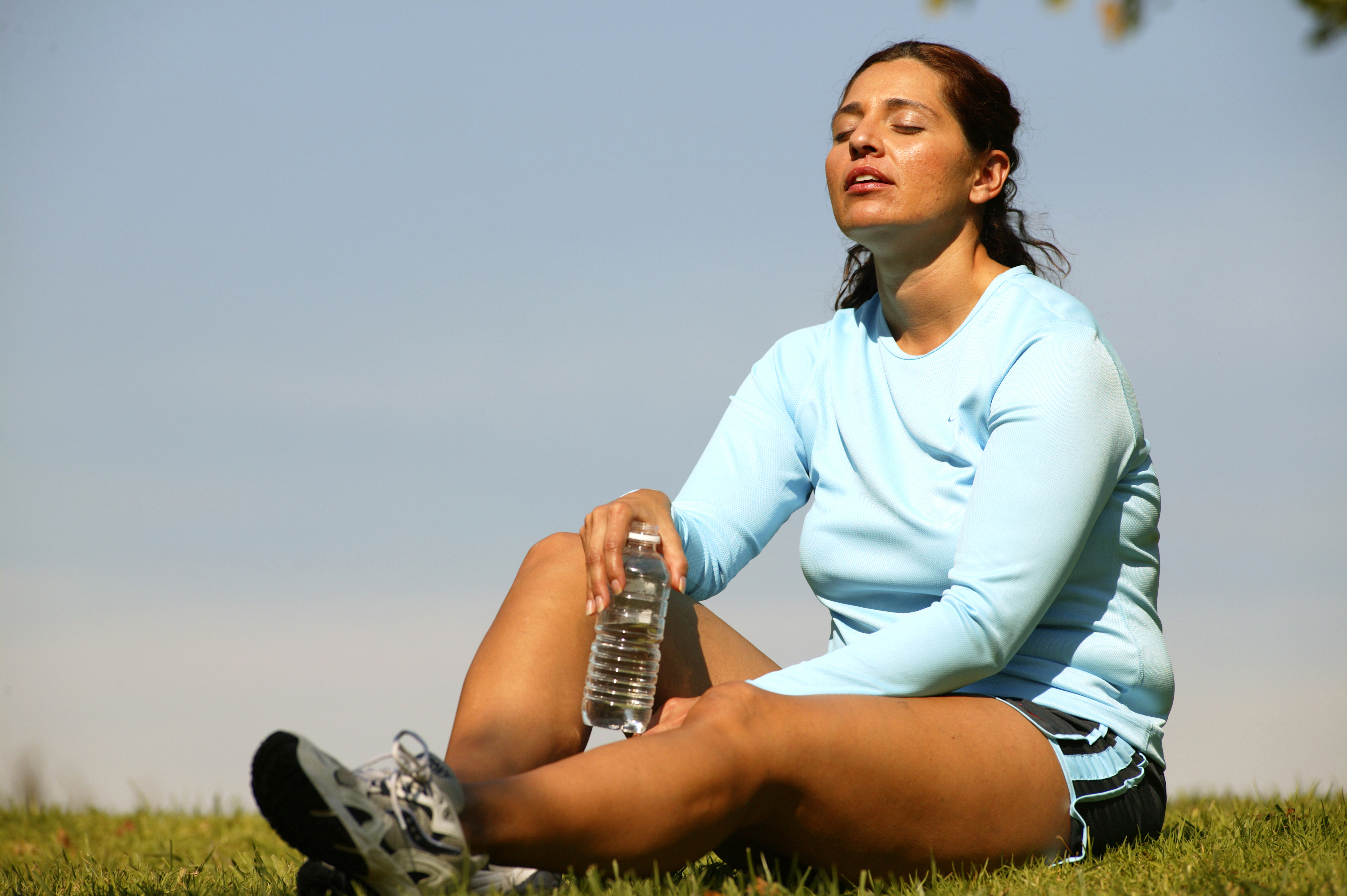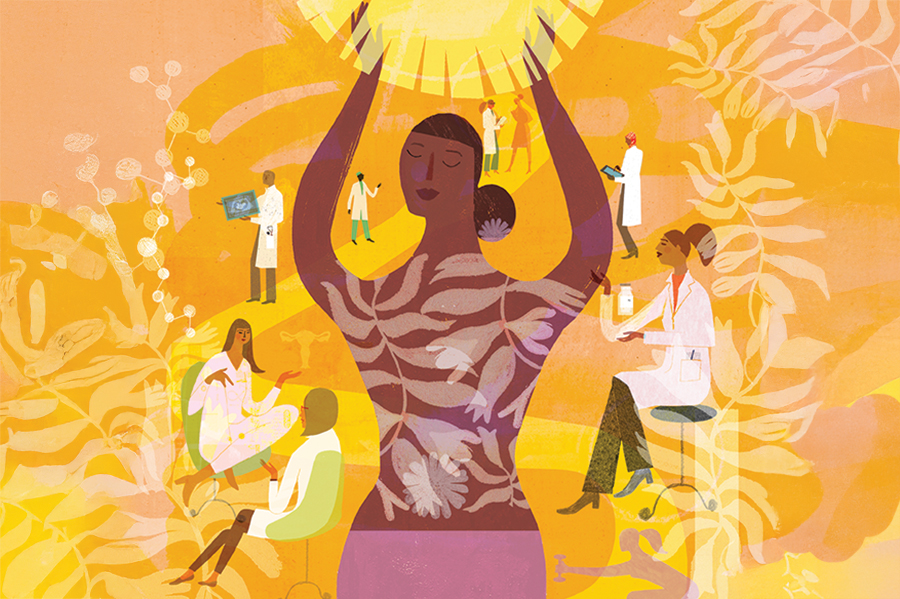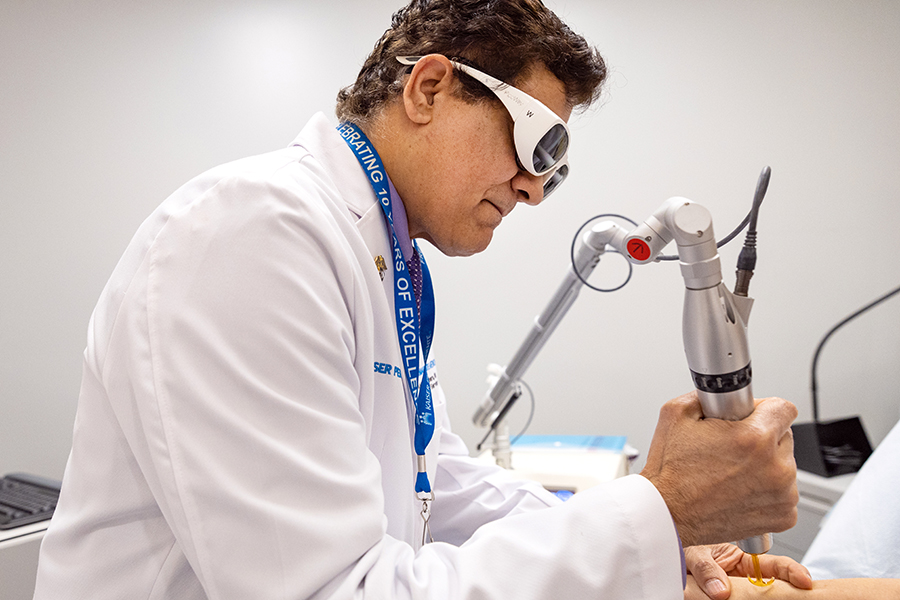The Fresno Bee — June 21, 2017
Fresno is forecast to swelter with temperatures of more than 100 degrees through Monday – 10 uninterrupted days of triple-digit distress.
Here are some of the questions posed to Dr. Jesus Rodriguez , KP Fresno, and his answers. The chat has been edited for clarity and brevity.
There are several degrees of things that happen before you get to heat stroke, which is the most dangerous. You may start out first with just a little bit of leg cramps. That is the very first sign you may need to hydrate more.
The second step is heat exhaustion and at that point, you may become a little dizzy, a little light-headed, sleepy or even confused. You should stop activity and get to a cool place, wet yourself down to cool off. A parent should take the temperature of a child. If it’s approaching anywhere 102 degrees you may seek medical attention. You don’t want to get into that life-threatening situation.
With heat stroke, you already have the dizziness, headaches, confusion, maybe nausea and vomiting, and you may even fall into a coma. You should already be on the way to a hospital.
Q: Is shivering a good or bad sign of heat stroke?
If you’re already hot and you’re shivering that’s going to make you hotter. So that’s not a good sign in the picture of a heat stroke. If someone is shivering and they appear to be dry and hot that could be a sign they’re going into heat stroke. But you want to look at the whole picture of other symptoms as well.
Q: Is a lot of salt in sweat a sign of a heat problem?
Sweat naturally has a lot of salt in it. Certain people just sweat more salt than others, but it doesn’t mean you’re dehydrated. It just means you need to supplement that salt if you’re going to be out there for more than an hour.
Q: How can a parent know if a child has heat exhaustion?
It’s important for parents to observe children while they are being active … if they seem confused or you see your child stumbling around and not being as active as before … those are signs they need to take a break. And parents need to educate their children if they’re feeling dizzy, nauseous or feeling like wanting to throw up, those are signs they need to take a break.
Q: Does a child need to be excessively sweating to have heat stroke?
No. They can just be red and you touch them and they’re dry and hot.
Q: What should I do if I think someone maybe having heat stroke?
If you’re thinking it may be heat stroke, the best thing to do is call 911.
We really need to get that person cooled down. Put them in the shade, wet them down with nice, cool water and even fan them to cool their body down. Have them drink cold water, little sips, but constantly.
Q: Is tap water better than cold water to drink?
Not really. Whenever you’re overheated we really want to bring your body temperature down as fast as we can.
Q: Should someone with heat exhaustion or heat stroke be given salt?
We want to avoid salt because salt just by itself depletes the absorption of fluids into the body. We’re trying to rehydrate them.
Drink water, lots of it
Q: How much water should a child drink on a hot day if they are outside playing?
It’s very important they drink water about every 15 minutes and take a break about every 15 minutes and get in the shade or go inside. If they are outside for more than an hour, they may need to supplement electrolytes with something like Gatorade or Powerade. Children under a year are not doing that much strenuous activity and it’s not a good idea to give them (Gatorade) because it has a lot of sugar.
Q: How quickly can a child get heat stroke on a 105-plus degree day?
The smaller the child, the higher the risk they can overheat because they really can’t regulate heat as well as an adult. A child six months or younger can be overheated in as little as 10 to 15 minutes inside a car. Children, from toddlers to say a 9 year old, if they’re out around in a park, it can take a couple of hours. So we don’t recommend they are out there that long.
Q: Is there a time of day children should not play outside?
Between 10 a.m. and 4 p.m. is the hottest part of the day and where the rays of the sun are the most damaging to our bodies. Everybody should avoid being out at those times.
Q: Should children be playing sports on hot days?
We want to avoid those high-heat times, again between 10 a.m. to 4 p.m.
Coaches should be aware of giving more frequent water breaks and also cutting the practice short and not as intense as they normally would have.
Q: Can a 5-month-old be given water on a hot day?
Ideally, the baby is getting liquids through breast feeding, but it is OK to supplement with a little bit of water if it’s been a hot day.
Dress right
Q: How should children be dressed on hot days?
With children less than six months of age, don’t bundle them up. Just one level of light clothing is OK.
If you’re going to walk outside and you’re wearing a short-sleeved shirt and shorts, then that’s an appropriate way to dress the child. Obviously, if you’re going to be outdoors for quite a bit, a long-sleeved shirt and pants should be worn to protect from the direct sunlight. The clothes should be loose fitting. And make sure you wear a hat. The looser the clothing is the better because you can get air flow and air flow kind of cools the body down.
Avoid cotton clothing. Cotton breathes well but it retains the water and it does not evaporate the water. Evaporation is actually what cools us down. If children are running around and sweating in cotton shirts, then they’re more likely to dehydrate sooner because their bodies are going to continue to sweat trying to cool themselves off and the soaked shirts won’t let them cool off as fast.
Q: Should sunscreen be applied to a baby’s skin?
Yes. We cool ourselves is through our skin. Look for sunscreens with an SPF of at least 30 or more to give you really good sun protection. If swimming or outside with a lot of activity, you may have to reapply if every half hour, hour, otherwise every two hours.
Q: Should I wear sunglasses?
We rarely think of our eyes being damaged form the sun, but yes, our cornea is a little layer and excessive sun can damage that. By wearing sunglasses you protect your eyes.
This article originally appeared in The Fresno Bee






